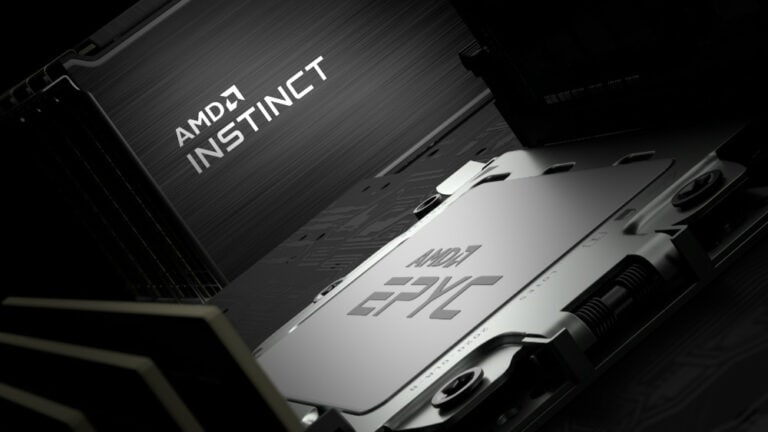Lenovo is launching the ThinkSystem SR685a V3 8GPU server, which the company developed with chip manufacturer AMD. According to Lenovo, the server is particularly well suited for high-computation performance, such as GenAI and Large Language Models (LLM). Additionally, Lenovo offers other AMD-equipped products and introduces a complete suite of tools to manage the AI computing power these unleash.
Choosing AMD as a partner should ensure versatile applications. After all, AMD is good at designing both CPUs and GPUs, while the competition focuses on either CPUs (Intel) or GPUs (Nvidia). This new infrastructure is the proof in the pudding: it runs on a range of AMD CPUs and GPUs. The Infinity Fabric connection architecture is also from AMD.
One server contains eight AMD Instinct MI300X GPUs for machine learning and deep learning tasks. It is driven by a fourth-generation AMD EPYC processor. The aforementioned Infinity Fabric handles the interconnect between the GPU’s. This provides 1.5 TB HBM3 memory capacity and up to 1 TB/s (peak) theoretical GPU I/O bandwidth.
That makes the product suitable for processing large data sets needed in financial services, healthcare, energy, (climate) science and transportation. It is intended for either enterprises (on-premises) or AI cloud service providers.
According to Lenovo, this server can maintain maximum performance for both high-performance CPUs and GPUs due to its significant thermal capacity via air cooling. The company also claims it is suitable for future generations of AMD CPUs and offers support for Nvidia’s HGX GPUs.
Efficient 1U-rack server
The ThinkSystem SR685a is not the only collaboration between Lenovo and AMD. The duo also introduces the Lenovo ThinkSystem SD535 V3, an efficient 1U-rack server powered by a single fourth-generation AMD EPYC processor. Use cases include cloud computing, virtualization, big data analytics and e-commerce transactions. According to the company, this server offers high flexibility by supporting both AMD and Intel CPU architectures within the same enclosure.
Regarding scalability, it offers configuration options for two to four nodes in a single chassis to integrate separate server units within a single physical enclosure. Moreover, Lenovo promises this server is energy efficient. It has an integrated power and cooling implementation providing up to thirty percent less power consumption than standard 1U-rack servers. It is managed through Lenovo XClarity software.
Definitely no edge case
For edge networking, Lenovo introduces the ThinkAgile MX455 V3 Edge Premier Solution, also equipped with AMD processors. In this case, the EPYC 8004-CPU for AI inferencing and real-time data analysis in edge computing. It integrates with both on-premises and Azure cloud environments. Key features include automation, near zero-touch provisioning and Lenovo Open Cloud Automation (LOC-A) for rapid deployment and management from any location. It also offers automated software updates validated by both Microsoft and Lenovo.
The ribbon tying all these new possibilities together is Lenovo AI Advisory and Professional Services. This covers a range of services, solutions and platforms designed to help businesses navigate the AI landscape. The set of services should implement the right AI solution quickly, cost-effectively and at scale, from initial exploration and consulting to implementation, management and scaling.
Read more: AMD claims lead in battle for fastest AI PC
